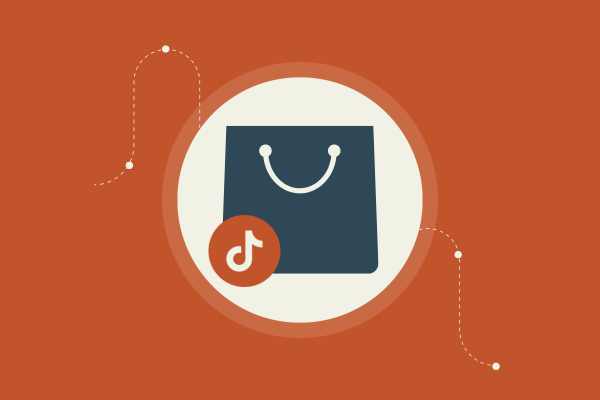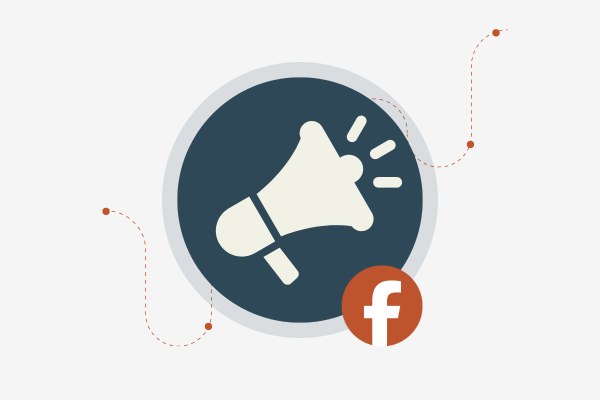How to Calculate DPO for Your eCommerce Business
Understanding Days Payable Outstanding (DPO) is crucial for any eCommerce business aiming to level up. DPO shows how long your company takes to pay its suppliers. This number impacts your cash flow, affecting how your business operates day-to-day.
Think of DPO as a game-changer. If you know your DPO, you can master cash flow and improve your financial health. It's not just a number; it's a strategy that helps you scale faster and more efficiently.
DPO measures payment timing to suppliers.
Mastering DPO improves cash flow and scaling.
Accurate DPO boosts financial health for growth.
Understanding DPO
Days Payable Outstanding (DPO) is a crucial financial metric that shows how long it takes your business to pay its suppliers. It impacts your liquidity and financial management. Grasping DPO helps you strategize better, whether you're managing cash flow or planning to scale.
Defining Days Payable Outstanding
DPO tells you how many days, on average, it takes for your business to settle payments with suppliers. To get this number, you take your accounts payable, divide it by the cost of goods sold, and then multiply by the days in the period. This number is key to knowing how well you’re managing your cash.
A low DPO might mean you're paying bills too soon and not optimizing cash flow. A high DPO can indicate holding onto cash longer, which might improve liquidity. But if it's too high, suppliers might not be thrilled.
DPO varies by industry. What's normal in manufacturing might be different in retail. Know your benchmarks. This way, you can compare your performance accurately.
The Significance of DPO in Business
DPO isn't just a number; it's a window into your business's health. It shows how you're managing your cash and can be a big deal for growth. When you keep cash longer, you might have more to invest in inventory or marketing.
But take note—stretching out payments too much can backfire. Relationships with suppliers can suffer if they feel you're delaying payments too long. This can hurt your reputation and impact future deals.
In the eCommerce world, balancing DPO can help you scale. Keep an eye on that balance. Use DPO to gauge if you're on the right track with cash management. Understanding this can set you up for smart, scalable growth.
The Calculation Game
Figuring out DPO is like playing a numbers game. You need to know the formula, what parts to plug in, and how to handle those numbers. This helps you manage your cash better and keep your suppliers happy.
Breaking Down the DPO Formula
Let’s slice this formula up. Days Payable Outstanding (DPO) looks at how many days you take to pay your bills. You start with average accounts payable (how much you owe on average).
Then, you pull in your cost of goods sold (COGS), which is what it costs to make or buy your products. Add the number of days in the period as the final piece. The formula is:
[ \text{DPO} = \left( \frac{\text{Average Accounts Payable}}{\text{COGS}} \right) \times \text{Number of Days in Period} ]
For example, if your average accounts payable is ( $50,000 ), COGS is ( $600,000 ), and you measure over 365 days, your DPO comes out to about 30 days. The result: on average, it takes 30 days for you to pay your suppliers.
Workin' It Out: Step-by-Step Guide to DPO Calculation
Got the hang of the formula? Now let's crank it out step-by-step. First, grab your average accounts payable. You find this by averaging the beginning and ending accounts payable over your chosen period.
Next, pull your COGS from your financial reports. This tells you how much you spent making or buying the stuff you sold.
Then, decide the number of days you’re looking at. Could be a year (365 days) or a quarter.
Now, plug these numbers into the formula: divide the average accounts payable by COGS. Multiply the result by the chosen number of days.
This will give you your DPO, revealing how quickly—or slowly—you’re paying bills. Keep an eye on this to make sure your business scales smoothly while keeping a solid grasp on cash flow.
Why DPO Really Matters
Understanding Days Payable Outstanding (DPO) is crucial for managing your eCommerce business. It impacts cash flow, providing insights into financial health. This section explores DPO's importance in managing cash flow and reaching the right balance between high and low DPO.
Cash Is King: DPO's Role in Cash Flow Management
Cash flow keeps your business moving. DPO affects how long your business holds onto its cash before paying suppliers. A high DPO means you're keeping cash longer, which can improve liquidity. This extra cash can be reinvested in growing your business or handling unexpected expenses.
But don't get too comfortable with a high DPO. Vendors might not be thrilled if you're taking too long to pay. You could end up with strained supplier relationships or even lose discounts for early payments. DPO is a balancing act.
Low DPO means you're paying suppliers quickly. While this keeps them happy, it might leave your business short on cash. Knowing your DPO helps you plan better. You can manage payments without sacrificing financial stability.
Balancing Act: Why Both High and Low DPO Matter
High DPO has its perks, but go too high and risk upsetting your suppliers. They might even cut ties or impose harsher terms. On the flip side, lower DPO signals prompt payments, boosting credibility but reducing available cash.
Finding the right DPO balance is key. A strategic approach ensures your business runs smoothly. Every industry has its own DPO benchmark. You need to compare your DPO to peers to stay competitive.
Set clear payment strategies. Use your DPO to improve your cash flow without hurting supplier relations. With the right balance, your business can thrive and scale with confidence.
Enhancing Business Operations
To boost your eCommerce game, nailing down your purchasing strategy and building strong supplier connections is critical. Master these areas, and you'll see smoother operations and healthier cash flow.
Optimizing Your Purchasing Strategy
First up, let’s talk about buying smart. If you don't have a handle on your purchasing strategy, you’re losing money. Look for bulk discounts—sometimes ordering in larger quantities saves cash. Dive deep into demand forecasting. Knowing what your customers will buy next month can stop you from drowning in excess stock.
Use tools that track your sales trends. This way, you know exactly what's flying off the shelves. Set up auto-replenishment systems to avoid stockouts. You’ll never miss a sale if the product is always in stock.
Negotiating payment terms is another goldmine. Set terms that keep cash in your pocket longer. Pay later without making suppliers unhappy. It’s all about finding that sweet spot that benefits both sides.
Supplier Relations & Negotiation Tactics
You need top-notch supplier relationships. This isn’t just a handshake deal. Form strong connections for better vendor relationships. They’ll be more willing to help when things go sour.
Start by being transparent with your suppliers. Share information about your business needs. Thus, suppliers know what to expect and aren't blindsided by your demands.
Now, let's talk negotiation. Negotiating payment terms is a skill worth honing. The longer you can delay payment, the better for your cash flow. But don't push too hard. Respect your suppliers, and you’ll get the best out of the deal.
You can learn more about these strategies from sites like Stenn.
Advanced DPO Strategies
Mastering DPO isn't just about crunching numbers. It’s a powerhouse tool for boosting your working capital and gaining a competitive edge. Let’s dive into unconventional strategies and see how you can wield DPO like a pro.
Beyond the Basics: DPO Impact on Working Capital
Your DPO has a direct link to your working capital. Hold onto cash longer, and you boost your liquidity. Simple, right?
By stretching your DPO, you delay cash outflows. This gives your business more time to use funds elsewhere. It's a neat trick to improve your cash conversion cycle without breaking a sweat. Use that extra cash to invest in new inventory or marketing. Think of it like getting a short-term interest-free loan.
But don't push it too far. Keeping cash too long might sour supplier relationships. It's about balance. You need that happy medium where you have enough liquidity while keeping suppliers on your side. Risk management is key here. Stay alert to avoid hurting long-term partnerships.
Creative Ways to Use DPO to Your Advantage
Now, let's get crafty. DPO can be more than a financial number. It's an opportunity! Depending on your agreements, longer payment terms can mean early payment discounts.
Negotiate with suppliers. Offer them early payments in exchange for discounts. This tactic can reduce costs, boosting your profit margins. Save where you can!
Use tech to streamline. Payment software can help track and manage your DPO. Real-time insights offer a clear snapshot, helping you plan smarter. Make informed decisions quickly.
Remember, DPO isn't just a lag. It’s leverage. Use it to optimize working capital and drive growth. Keep your eyes peeled for opportunities to flip the script and turn cash flow in your favor.
The Bigger Financial Picture
Understanding how Days Payable Outstanding (DPO) fits into the larger financial landscape can give you an edge in managing your eCommerce business. It isn't just about paying bills—it's about connecting DPO with other financial metrics to make smarter decisions. Let's break it down.
Linking DPO to Other Financial KPIs
DPO is a piece of the puzzle. It connects to other financial metrics like Days Sales Outstanding (DSO) and Cash Conversion Cycle (CCC). When you get these numbers right, your business runs like a well-oiled machine.
Here's the deal: DSO tells you how fast you're getting cash from sales. Pair that with DPO, and you see how long you're holding onto cash before paying suppliers. Together, these influence your CCC, which measures the whole cycle from inventory investment to receiving sales revenue.
Take a look at the numbers side by side. Keep DPO balanced. If it's too high, it might strain supplier relationships, but if it's too low, you're missing out on liquidity. Find that sweet spot, and you set your business up for growth.
Forecasting With DPO: Looking Ahead
DPO isn't just for now; it's a tool for planning. By looking at trends, you can forecast your cash flow and plan for the future. Keep an eye on patterns. Is your DPO increasing or decreasing over time? This trend analysis can be a sign of good or bad practices.
Regularly forecast your cash needs. Use DPO to predict whether you’ll have enough cash to expand or cover unexpected costs. Imagine rolling out a new product line but lacking the funds to do it. That's where DPO helps.
Use what you learn from DPO trends to adjust strategies. It could mean negotiating with suppliers for better terms or speeding up your sales cycle to reduce DSO. With this foresight, you're not just surviving—you’re thriving.
Putting DPO to Work
Making Days Payable Outstanding (DPO) work for your eCommerce business can give you a leg up on competition. You need to know how to leverage it for growth and understand real-world uses—whether it's beefing up your cash management or checking against industry benchmarks.
Leveraging DPO for Growth and Scaling
DPO isn’t just a number; it’s a toolkit for scaling your business. By optimizing DPO, you can hang on to your cash longer. This means more funds for things like stock, marketing, or new hires.
Picture this: more time to pay suppliers lets you invest in growth without sweating immediate cashflow. But don’t go overboard. Stretching it too far can harm your supplier relationships. Here’s what’s awesome—analyzing your DPO alongside industry benchmarks can highlight weaknesses or strengths in your financial planning.
Make DPO your secret weapon for growth. It's all about strategically balancing your payments and planning for the future.
DPO in the Real World: Practical Examples
Let's get down to brass tacks—how DPO looks in practice. A tech startup uses DPO to boost its cash reserves during a big launch. They sync payment schedules with cash inflows, which frees up capital to scale and up their marketing game.
On the flip side, a retail company with a short DPO might miss out on potential growth because they’re paying suppliers too quickly. Keeping an eye on how others in the industry manage their DPO can either show room for improvement or let you know you're nailing it.
Study these examples to find gems of insight. The right DPO strategy is like having a cheat code for your financial health. Keep refining and watch your brand soar to new heights.
Tools and Resources
Cracking DPO is not just about knowing the formulas. It's about using the right tools and staying within financial rules. You need solid tech to track those numbers and stay compliant with the laws.
Tech to Track: DPO Calculators and Software
Tracking your Days Payable Outstanding (DPO) is like having a GPS for your cash flow. There are tons of tools out there that can do the heavy lifting for you.
Use a DPO calculator to nail those numbers fast. It takes your Accounts Payable and Cost of Goods Sold, doing the math so you don't have to.
Look for financial management software that integrates with your existing systems like your invoicing tools.
Options like QuickBooks and Xero automate complex calculations. These tools streamline invoice processing and keep you from drowning in spreadsheets.
Remember, a good tool saves you time, and time is money.
Staying Compliant: DPO and Financial Regulations
Now, let's talk compliance—serious stuff here. When dealing with DPO, you've got to follow the rules. Financial regulations aren't just guidelines; they're the law.
Your DPO numbers are part of this picture and should adhere to accounting standards. Stay updated on current regulations and make sure your methods comply.
Use systems that offer compliance tracking to ease this burden. Software options often include features for monitoring regulatory updates and auditing trails, so you don't miss a beat.
Compliance isn't optional if you want to scale your business safely.







